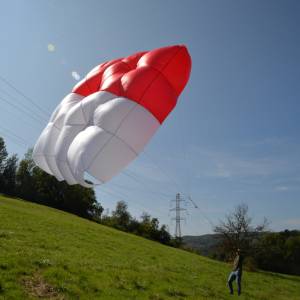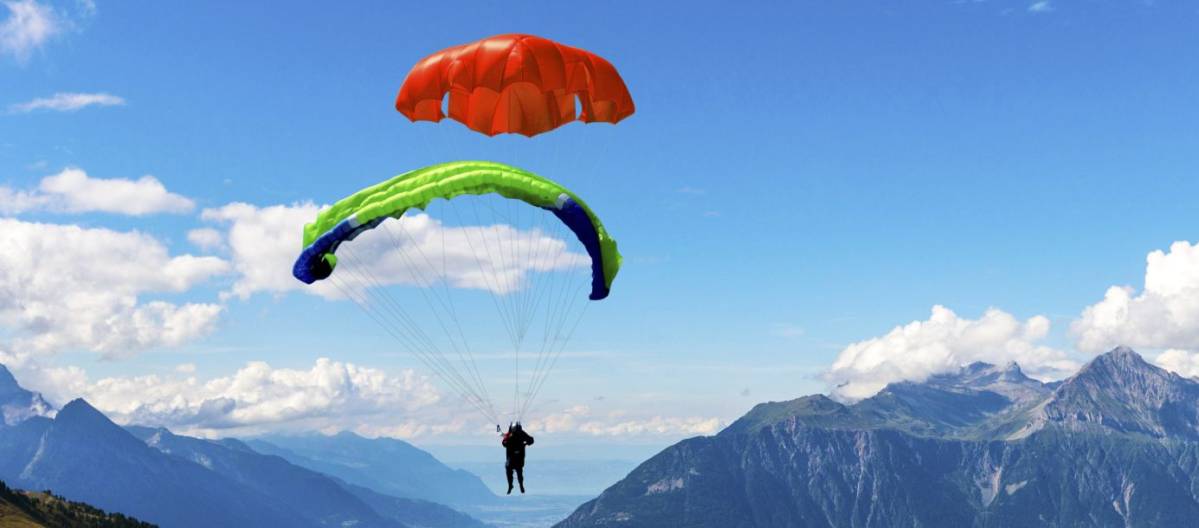The rescue parachute, an essential element in paragliding!
The rescue parachute is an essential part of your equipment for your safety!
Choosing a parachute is not easy. This choice depends on various criteria: your TWA, your type of practice, your harness, your budget, ...
Today, rescue parachutes are quite different: fabric surface, sink rate, shape, ... A few years ago, parachutes were round but today you will find more elaborate shapes: square, octagonal, ... Each shape has its own specificities.
You can find more information on choosing your parachute at the bottom of the page. If you have any questions or need advice, don't hesitate to call us or send us an email, we are here for that!
After the purchase, it is important to pack your rescue parachute properly in your harness: packing the parachute, connecting the parachute to the harness and packing! Ask us for advice or come directly to the school, we have a workshop service where we can pack your parachute into your harness.
All our parachutes are repacked by us, before being shipped because a parachute that remains folded and compressed for a long time can lose up to 2 seconds when opened.
For the purchase of a rescue parachute, we offer the assembly of the rescue in your harness!
How to choose a rescue parachute?
The rescue parachute should bring you back to the ground as slowly as possible in case of a problem and not be too heavy in your harness. This is the most important criterion, and it's simply what we ask of a rescue parachute... You should therefore first look to be within the PTV range defined by the manufacturer. Being at the bottom of the range is better for safety. Then, you must also look at the stability and the fall rate which will influence the fall speed! This will be mainly influenced by the shape of the rescue parachute:
- Round parachute: The easiest to pack, the cheapest but often the least stable
- Square parachute: Good pendulum stability with a relatively short line cone, so less chance of it getting tangled with your main canopy... However, some are designed with a drift to reduce the sink rate. Some are much more difficult to pack than others.
- Triangular canopy: Excellent for pendulum stability, more complex to pack than a round canopy but easier than a Rogallo. Steerable on some models, no drift when opened.
- Rogallo parachute: A very low sink rate but combined with a horizontal speed (the Rogallo hovers) even with the braked opening option, which can lead you quickly into obstacles if you can't fly the rescue.
Lightness can also be a criterion for some. Indeed, there are some "light" rescue parachutes (around 1.1kg for small PTV ranges) and others rather standard. As a beginner, the difference in weight between the different types of parachute will not have much impact on your practice.










 Marques
Marques

